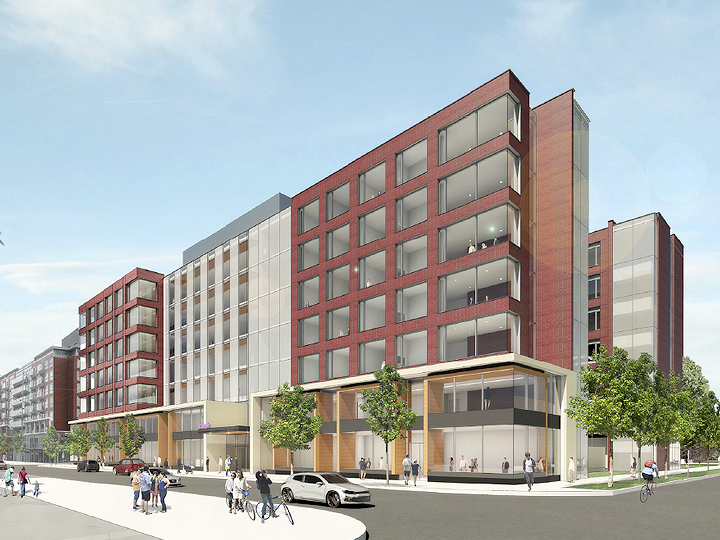
Plenary Health CAMH selected to lead CAMH redevelopment project in Toronto
January 26, 2017
By
CCE
The CAMH project will result in the construction of approximately 655,000 sq. ft. of new build space

Centre for Addiction and Mental Health (CAMH) Phase 1C Redevelopment (source: Infrastructure Ontario)
Infrastructure Ontario has announced that the Plenary Health CAMH group has been selected as the preferred proponent to design, build, finance and maintain the Phase 1C redevelopment project for the Centre for Addiction and Mental Health (CAMH) in Toronto .
The Plenary Health CAMH team includes: developer: Plenary Group (Canada) Ltd. and PCL Investments Canada Inc.; design-builder-PCL Constructors Canada Inc. (Toronto); architect – Stantec Architecture Inc.; facilities management – ENGIE Services Inc. (formerly Cofely Services Inc.); and financial advisor – Plenary Group (Canada) Ltd.
Evaluations following the request for proposals process began in February 2016, and now Infrastructure Ontario and CAMH will work on finalizing contract details with Plenary Health CAMH, expecting to reach a financial close in March 2017. The contract cost will be announced publicly following financial close. Construction is scheduled to begin in this fall.
The redevelopment project will see the construction of two buildings along Queen Street West in Toronto featuring inpatient and outpatient services for people who are acutely ill as well as those experiencing the most complex forms of mental illness.
The project will result in the construction of approximately 655,000 sq. ft. of new build space and will include the extension of roads, parks and green space improvements and restoration of the heritage wall around the facility. It is expected to achieve a LEED Gold certification.
“Phase 1C will be the largest and boldest phase of CAMH’s redevelopment project to date,” said Dr. Catherine Zahn, president and CEO, CAMH, in a statement. “Two light-filled and environmentally friendly buildings will open the doors to our community even wider. They will create dignified spaces for our patients to receive care and support for recovery.”